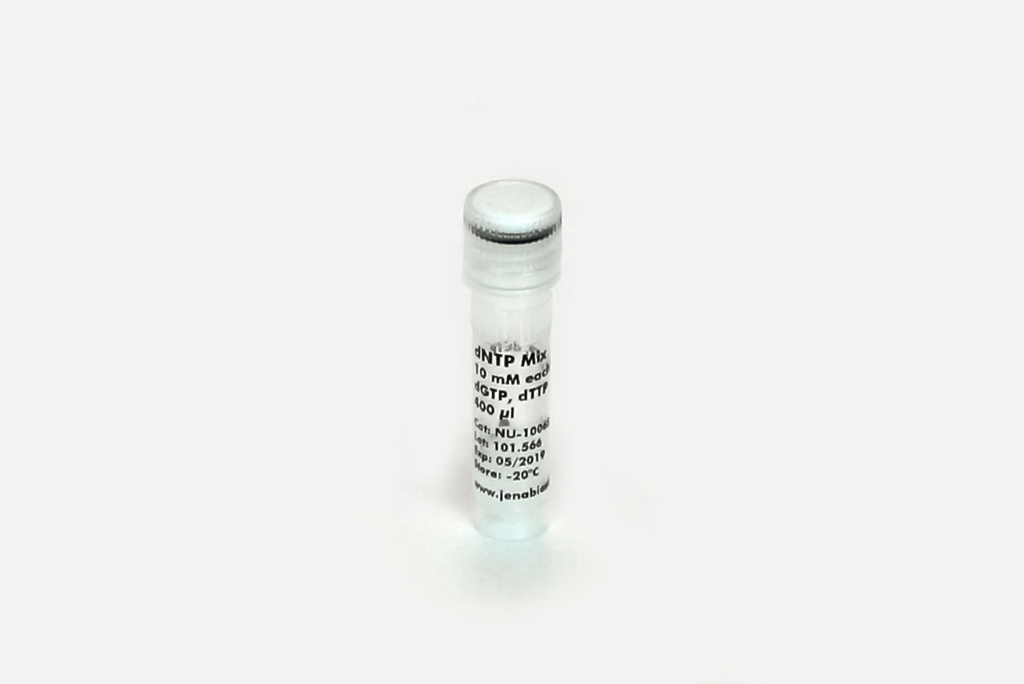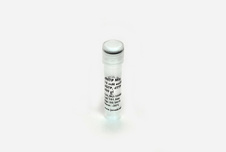qPCR MultiplexMaster highROX,10 x 1,25 ml (2x conc.)
Detailní popis
For in vitro use only!
Shipping: shipped on blue ice
Storage Conditions: store at -20 °C
avoid freeze/thaw cycles, store dark
Storage at 4 °C for up to 3 months possible.
Shelf Life: 12 months
Form: liquid
Concentration: 2x conc.
Description:
qPCR MultiplexMaster highROX is designed for quantitative real-time analysis of DNA samples using Dual Labeled Fluorescent Probes, e.g. TaqMan®, Molecular Beacons or FRET probes. The master mix is specially optimized for setting-up multiplex assays with ≥4 target sequences in a single tube.
The system overcomes multiplex limitations of conventional qPCR probe mixes combining an above-average robustness for a multitude of known PCR inhibitors with an excellent sensitivity for amplification of lowest template amounts.
The 2x concentrated master mix contains all reagents required for qPCR (except template and primer/probe sets) including a highly processive antibody-inhibited hot-start polymerase and ultra-pure dNTPs.
The mixes provide an extremely stringent automatic hot-start allowing reaction set-up and temporary storage at room temperature prior to PCR.
The reaction chemistry of the kit is optimized for block-based PCR instruments that are compatible with the evaluation of the ROX reference signal.
ROX reference dye:
The qPCR MultiplexMaster highROX contains 500 nM ROX passive reference dye in the final assay. The dye does not take part in the PCR reaction but allows to normalize for non-PCR related signal variation and provides a baseline in multiplex reactions
Dual-labeled DNA probes:
Real-time PCR technology based on dual-labeled DNA probes provides a high sensitive and high specific PCR system with multiplexing capability. It requires two standard PCR primers and the DNA probe that hybridizes to an internal part of the amplicon. The sequence of the dual-labeled DNA probe should avoid secondary structure and primer-dimer formation.
Content:
qPCR MultiplexMaster highROX(red cap)
qPCR Pol, dATP, dCTP, dGTP, dUTP, 1 μM ROX, reaction buffer with KCl, (NH4)2SO4, MgCl2 and stabilizers
PCR-grade water (white cap)
Preparation of the qPCR master mix:
The preparation of a master mix is crucial in quantitative PCR reactions to reduce pipetting errors. Prepare a master mix of all components except template as specified. A reaction volume of 20-50 μl is recommended for most real-time instruments. Prepare 13 volumes of master mix for 12 samples or a triple-set of 4 samples. Pipet with sterile filter tips and minimize the exposure of the labeled DNA probe to light. Perform the setup in an area separate from DNA preparation or analysis. No-template controls should be included in all amplifications.
| component | 20 μl assay |
50 μl assay |
final conc. |
| qPCR MultiplexMaster highROX | 10 μl | 25 μl | 1x |
| each primer forward (10 μM)1) |
0.6 μl | 1.5 μl | 300 nM |
| each primer reverse (10 μM)1) |
0.6 μl | 1.5 μl | 300 nM |
| each dual- labeled probe (10 μM)2) |
0.4 μl | 1 μl | 200 nM |
| template DNA | x μl | x μl | <500 ng/assay |
| PCR-grade water | fill up to 20 μl |
fill up to 50 μl |
- |
1) The optimal concentration of each primer may vary from 100 to 500 nM.
2) Optimal results may require a titration of DNA probe concentration between 50 and 800 nM.
Dispensing the master mix:
Vortex the master mix thoroughly to assure homogeneity and dispense the mix into real-time PCR tubes or wells of the PCR plate.
Addition of template DNA:
Add the remaining x μl of sample/template DNA to each reaction vessel containing the master mix and cap or seal the tubes/plate. Do not exceed 500 ng DNA per reaction as final concentration. Tubes or plates should be centrifuged before cycling to remove possible bubbles.
Recommended cycling conditions:
| Initial denaturation and polymerase activation |
95 °C | 2 min | 1x |
| Denaturation | 95 °C | 15 sec | 35-45x |
| Annealing and elongation |
60-65 °C4) | 1 min5) | 35-45x |
4) The annealing temperature depends on the melting temperature of the primers and DNA probe used.
5) The elongation time depends on the length of the amplicon. A time of 1 min for a fragment of up to 500 bp is recommended.
For optimal specificity and amplification an individual optimization of the recommended parameters, especially of the annealing temperature may be necessary for each new combination of template DNA, primer pair and DNA probe.
Related products:
- Dual-labeled DNA probes
- Custom primers
- ROX reference dye, #PCR-351
Hodnocení produktu
Produkt zatím nikdo nehodnotil, buďte první!


